► The Puma is finally available as an electric car
► Rather different prospect to Ford’s other EVs
► But is it too little too late?
Ford has been struggling with its electric car line-up, and it hopes the Puma Gen-E is the car to change that. The Mustang Mach-E grabbed headlines at launch but is now practically forgotten among the EV crowd, and the Explorer and Capri especially have attracted attention for all the wrong reasons. Not helped by them being made from Volkswagen’s troublesome MEB bits and pieces, hardly the foundations for success.
What Ford’s EV line-up has needed is some familiarity, and that’s exactly what the new electric Puma Gen-E brings. Ford’s baby crossover has been the best-selling car in the UK for the past two years and more than 11,000 were sold in the March’s 25-plate rush alone.
Most of those are sold to private buyers, which are far more brand loyal than fleets and business that will chop and change depending on what’s cheapest. Even if Ford persuades a fraction of Puma buyers to go for the EV over the existing mild-hybrid version it’s bound to become one of the UK’s most popular electric cars – if it’s good that is.
At a glance
Pros: One of the best small SUVs to drive, practical boot, efficient
Cons: Poor interior quality and ergonomics, below-average EV range, ride quality not great
What’s new?
While the Explorer and Capri are both made from Volkswagen’s electric toolkit, the Puma Gen-E is all Ford’s doing. Based on a revised version of the regular Puma’s platform (itself adapted from the last-of-the-line Fiesta), you’ll also find the setup in Ford’s smallest van, the Transit Courier.
We’ll delve into the specs in the next section, but there are styling changes made compared to the standard Puma – and Ford hasn’t taken the Stellantis approach of making ICE and electric models look identical. Ford of Europe’s head of design Amko Leenarts is particularly proud of this.
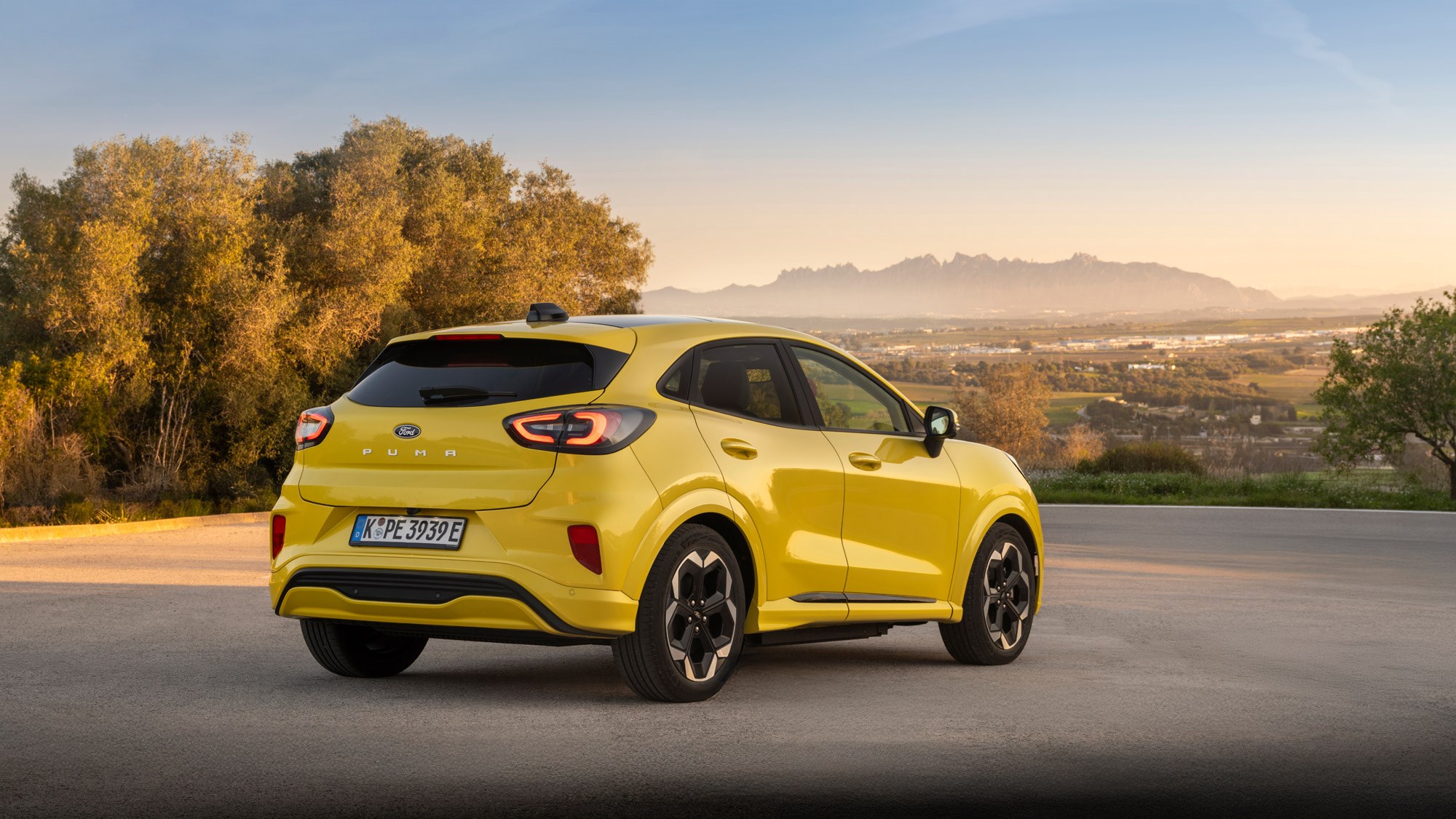
A closed-off grille is the main difference, but there are new air vents and curtains in the front bumper to maximise aero – likewise the Gen-E’s spoiler is longer and lower. New colours Electric Yellow and Digital Aqua Blue are also exclusive to the EV. But make no mistake, it’s still recognisable as a Puma – and that is the whole point.
Inside, the Gen-E is much the same as the facelifted Puma introduced in 2024 and it’s worth noting this Gen-E has arrived around a year later than it was first expected. One of the main changes is that the EV gets a new centre console with greater storage beneath, and the Puma’s MegaBox USP underfloor boot storage is now even more useful.
What are the specs?
Unlike most rivals, the Puma Gen-E is only offered with a single powertrain and it’s one that looks quite uncompetitive on paper. Of the 53kWh net battery pack, only 43kWh is usable – rather small for an electric SUV, even a small one. It means the claimed 233-mile range is down on most rivals, and sinks to just 226 miles in the top-spec Premium trim.
The small battery is a knock-on effect of the Puma’s packaging constraints, including using an ICE platform but also not wanting to get in the way of the car’s underfloor boot storage. As a result, the battery pack sits beneath the seats, and is particularly visible from the exterior of the car.
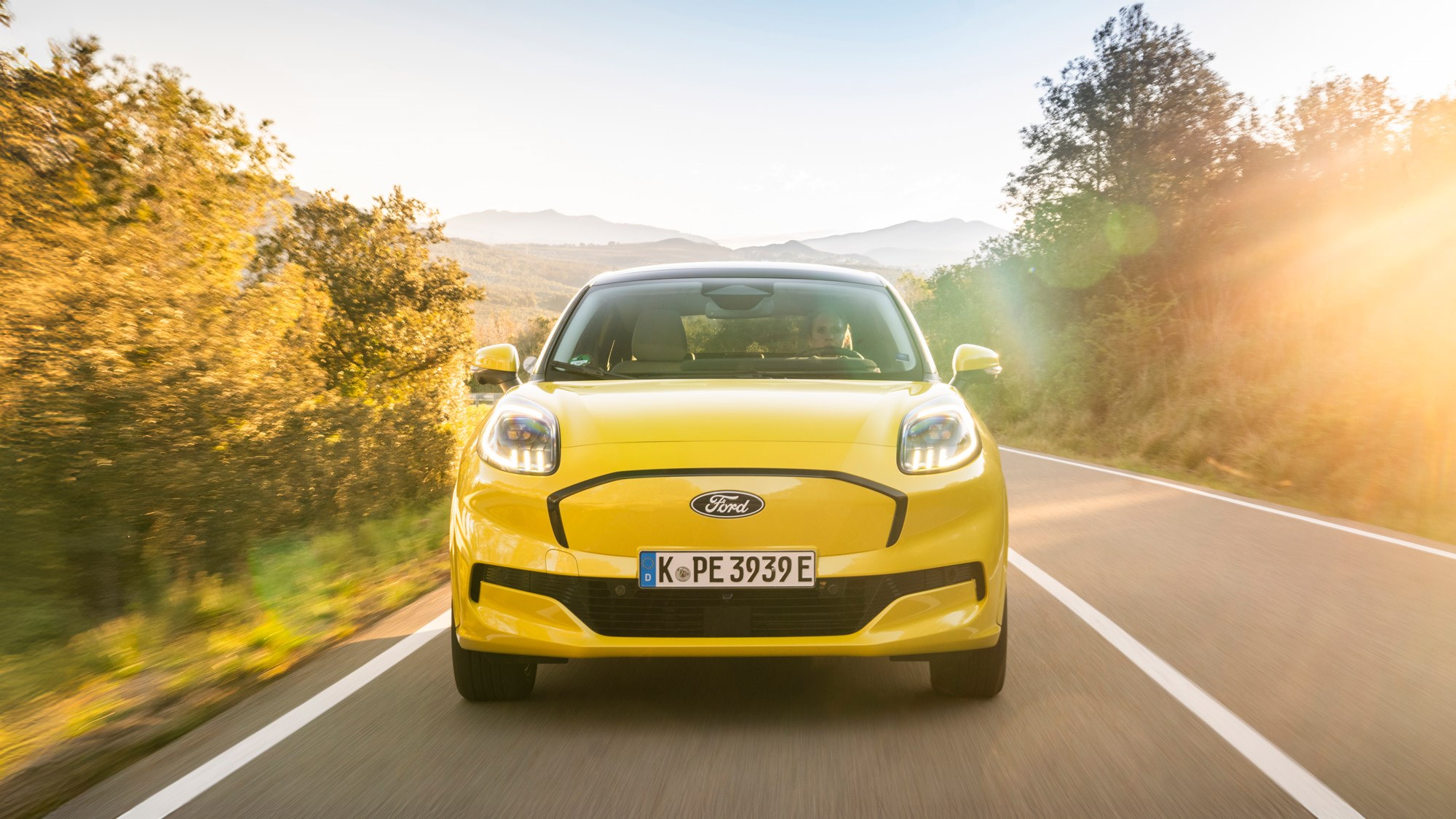
On the plus side, Ford’s extra focus on aerodynamics means it’s very efficient. Ford claims 4.5mi/kWh, and we averaged 4.2mi/kWh without driving with efficiency in mind, giving a real-world range of 180-200 miles, albeit in temperatures in the low-20s. It’s still not a great range, but it’s quite close to the claimed figures, and I’m increasingly in the mindset that efficiency can be more important than outright range. Its max DC charging speed is also 100kW, allowing a 10 to 80 per cent charge in 23 minutes.
In terms of performance, the front-mounted electric motor develops 166bhp and 214lb ft of torque; figures not too dissimilar from the Puma ST, which is now only available with a 1.0-litre petrol engine. Acceleration is dispatched in eight seconds, with a 99mph top speed.
How does it drive?
Given the Puma is one of the best small SUVs to drive, the good news is that the Gen-E retains that title in the electric class. Though around 200kg heavier than the mild-hybrid version, it doesn’t feel that way to drive.
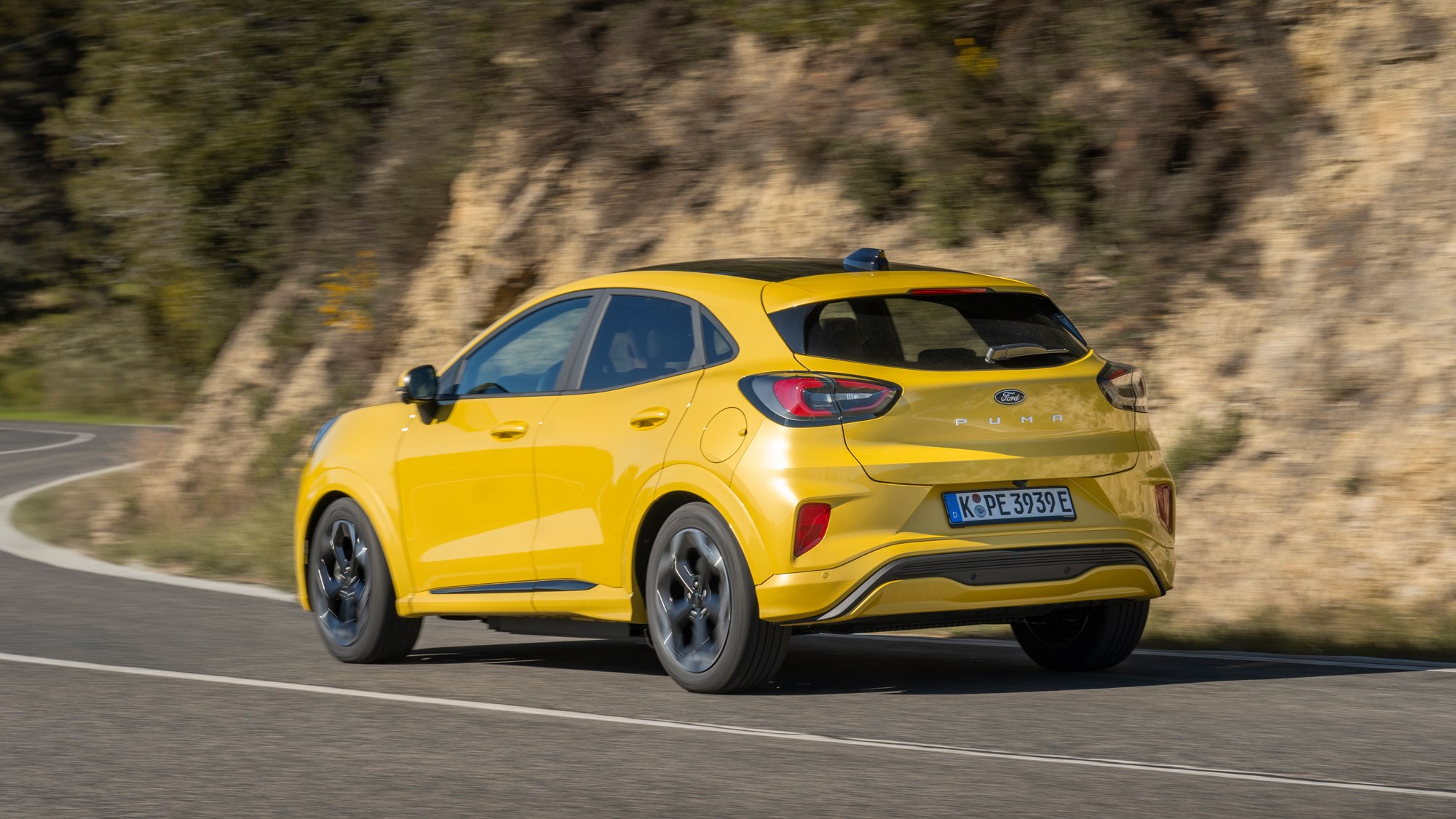
Despite Ford’s best efforts to spoil the experience with the Puma’s excessively large steering wheel that wouldn’t look out of place on a bus, the steering itself has actual feel to it (a rarity in this class) and is precise, enabling you to thread it through a tight set of corners. Body control is excellent, aided further by the low centre of gravity afforded by the battery. Grip levels are also seriously impressive, though we’ve only driven it in the dry so far.
The brakes have more bite to them than plenty of rivals (principally Stellantis’ EVs and their horribly vague left pedal) and the one-pedal drive is sharper than many in this class have, too. It’s the mode we’d have it in for driving around the city. There’s also an interesting ‘propulsion sound’ that is one of the more inoffensive of all the fake engine noises.
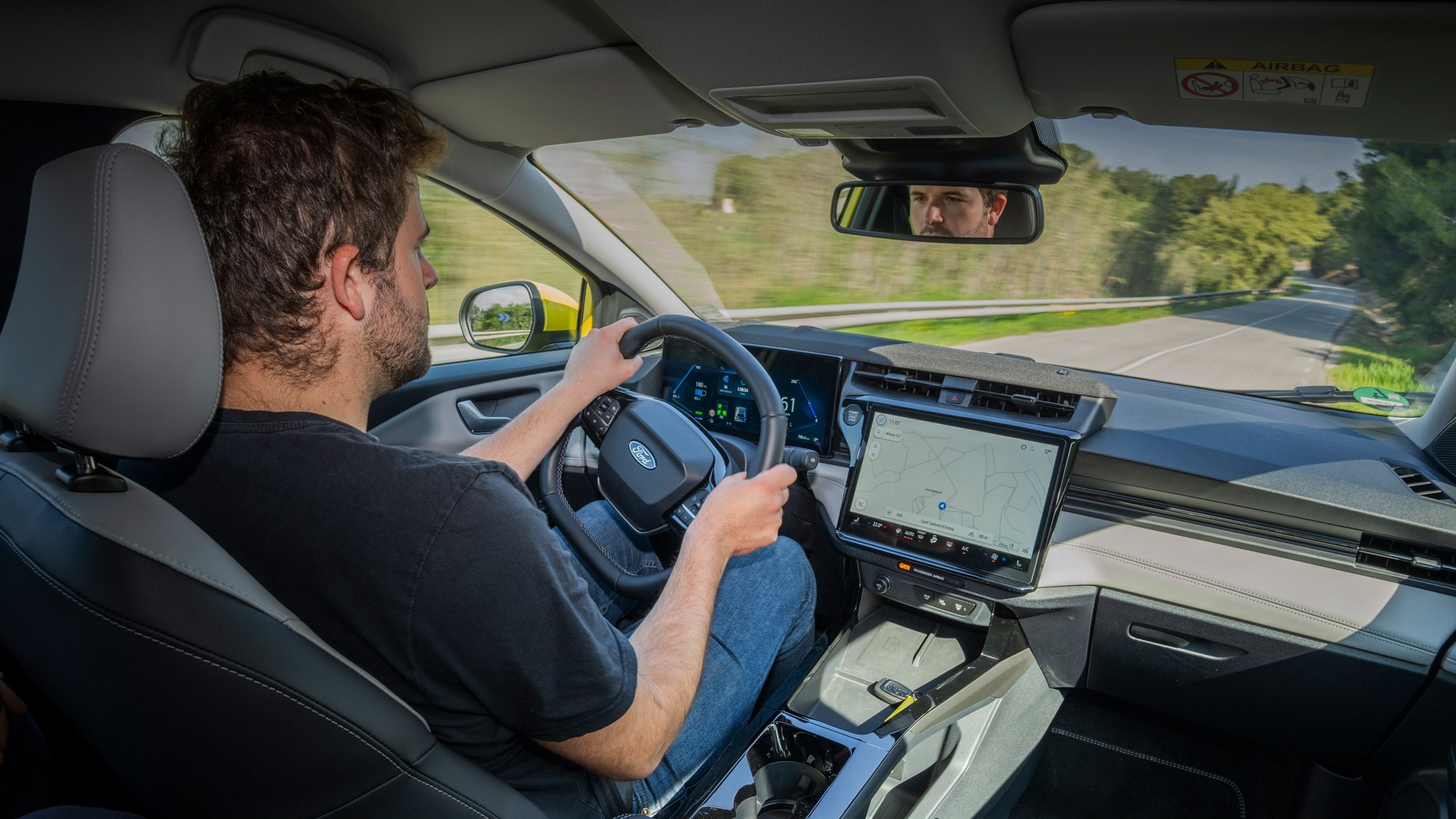
As with the standard Puma, the ride is on the firmer edge of the scale. Far from uncomfortable, it just struggles with compression on particularly rough surfaces or those with camber. The standard alloys are 17s and we’ve only tried it on the 18s which are bearable. As with a regular Puma, stay clear of the optional 19-inch alloys as it will likely prove brittle.
What’s it like inside?
If you want an example of a car that’s got worse after a facelift, the updated Puma’s interior is a fine example. Though previously nothing to write home about, it’s infinitely been made worse in most areas since its 2024 facelift. From the giant squared-off steering wheel that might work in a Transit, but not in a small crossover, to everything being moved to within the touchscreen, it’s now harder to use and a disaster to look at.
Though running Ford’s latest SYNC 4 software, the screen is far from slick to use, with a lag present with most features, and getting to the driver assistance menu to disable any irritating bings and bongs requires far more button presses than it should. But it’s how it looks that is our biggest gripe.
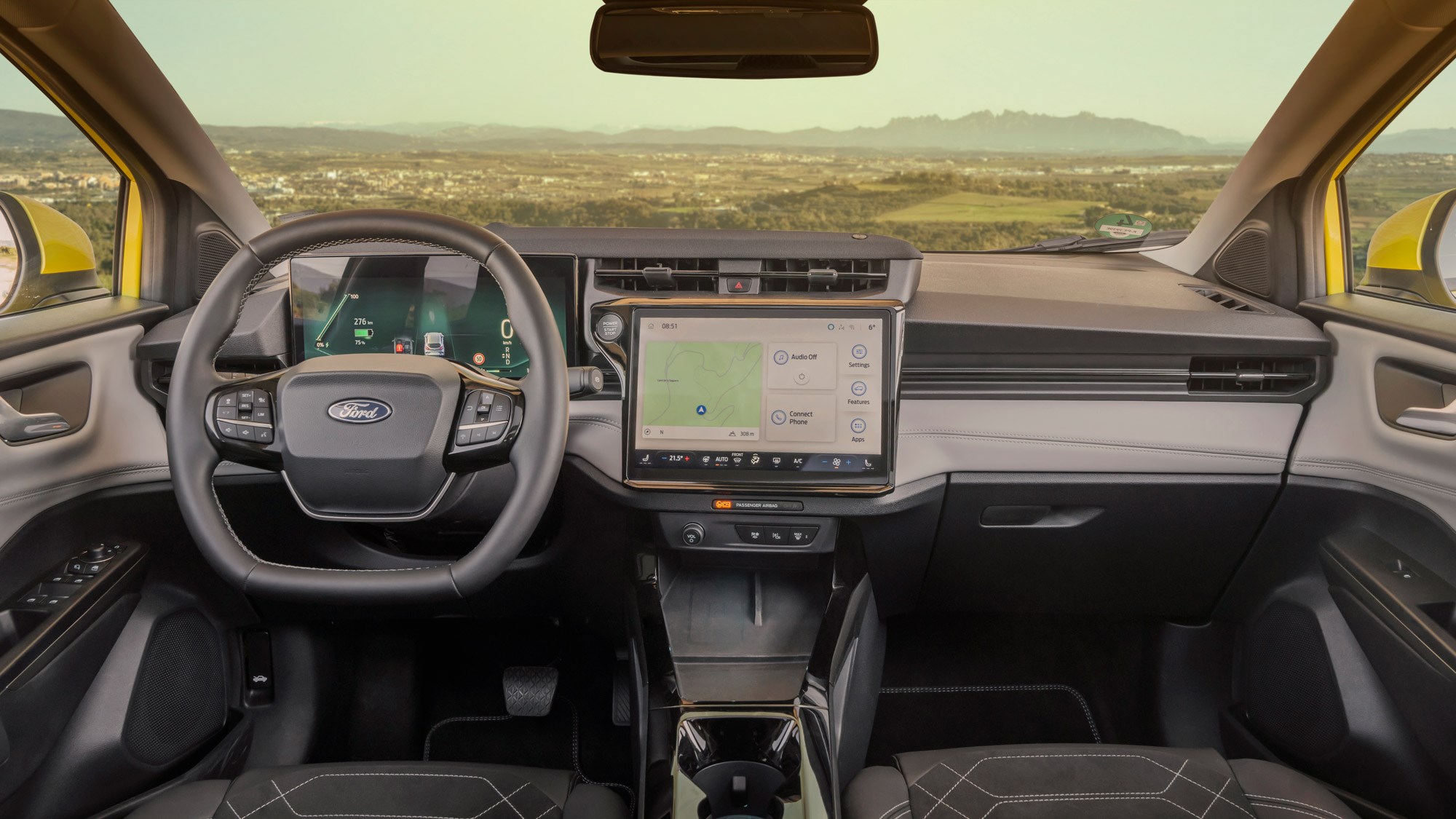
The air vents plonked on the top of the dashboard look like a complete afterthought and nothing really fits into the gap it’s meant to. It feels quite cheap, too, with plenty of hard plastics throughout. Even some white leather-effect material can’t help.
But if you want a small electric SUV with a big boot, you won’t do better than the Puma. Ford’s renamed the underfloor boot storage area from the MegaBox to Gigabox on account of the EV’s been even more useful. Ideal for keeping muddy boots out of the way or storing taller items upright, it’s highly versatile and more than the gimmick it might first sound. A generous 574 litres of space is not to be sniffed out in this class, either. A Vauxhall Mokka Electric’s 310 litres looks tiny in comparison.
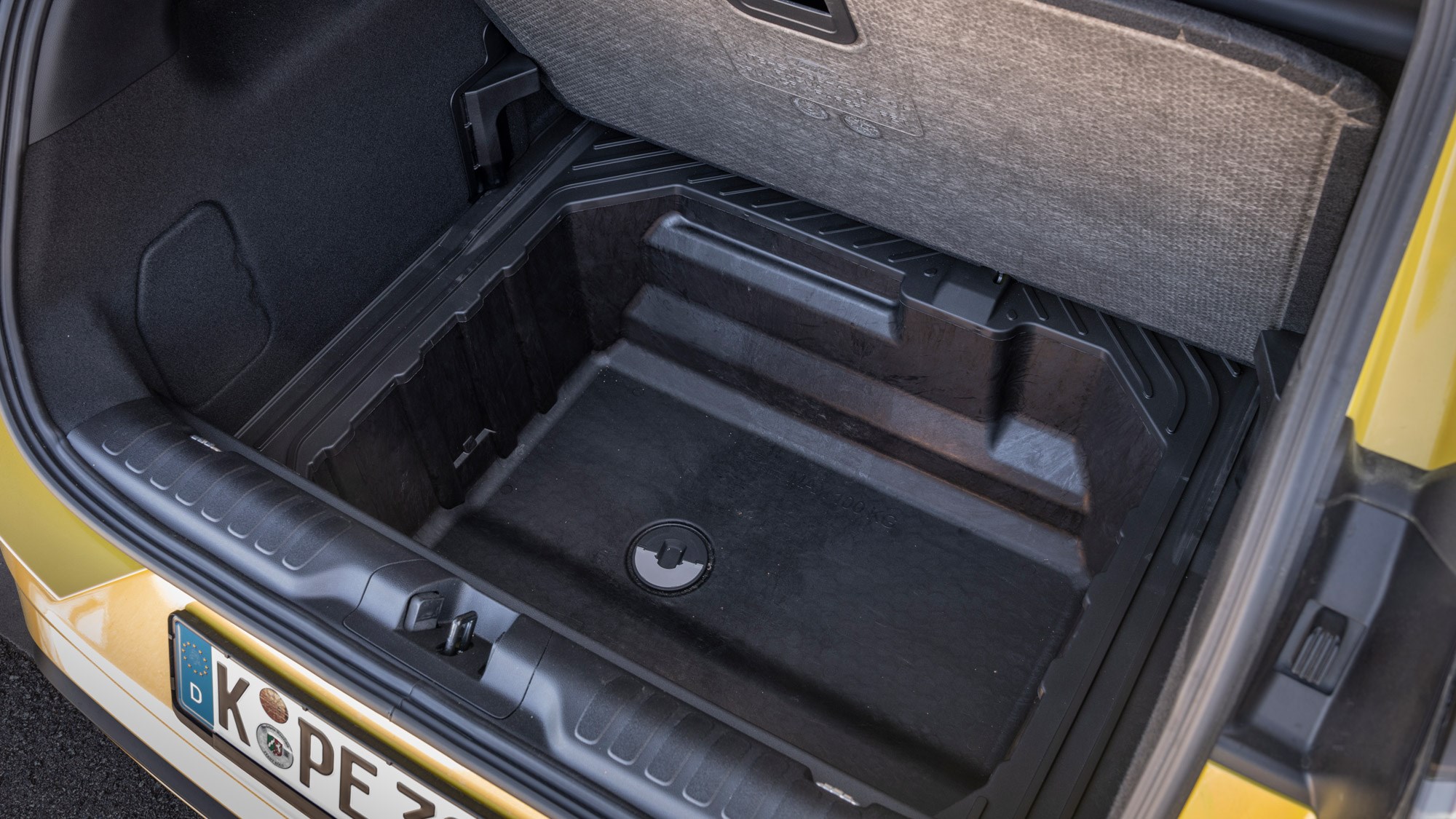
There’s also a small slot under the bonnet for keeping charging cables or odds and ends out of the way, and the redesigned centre console for the EV is better, too, with more storage within it and then beneath too. Pity the rear-seat space is quite tight for adults and that the rear floor has had to be raised compared to a hybrid Puma to be able to accommodate the battery beneath.
Before you buy (trims and rivals)
The Puma Gen-E is available with two trim levels – Select and Premium – adopting the same structure as Ford’s other EVs, rather than mirroring the levels offered on a regular Puma.
Select starts from £29,995 for the Select, bringing LED lights, a 12.8-inch digital instrument cluster, 12-inch touchscreen and reversing camera. For £31,995 you get the Premium and its Matrix LED headlights, electric boot and keyless entry. Both are roughly £3,500 more than a similarly-specced petrol Puma. It does, generously, come with a free home wallbox with inclusive charging credit (or a cash equivalent for those not needing one) as well as servicing and roadside assistance for five years.
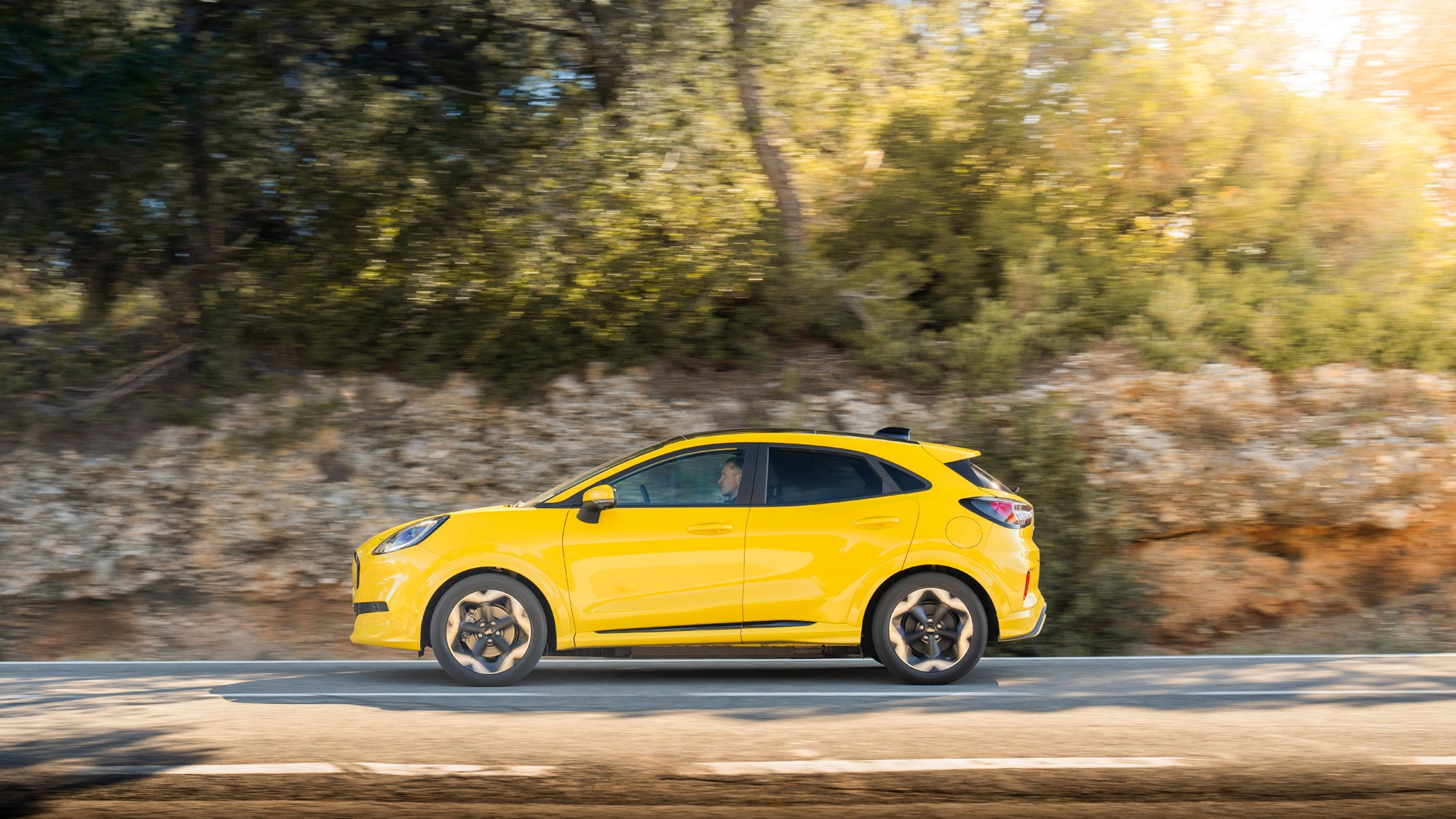
It’s decent value by electric SUV standards, but is undercut by the better-equipped and larger Skoda Elroq, one of the best electric family cars you can buy. The excellent Kia EV3 is also available for not too much more money than a top-spec Puma.
Verdict
If Ford wants to start selling large volumes of electric cars, the Puma Gen-E is the car to do it. It brings some well-needed familiarity to Ford’s somewhat muddled EV line-up, offering the engaging driver experience and familiar looks that its loyal buyers expect.
It’ll go down well with the thousands of Puma and Fiesta buyers on a return PCP agreement wanting to dabble in the world of EVs with a product they know and feel comfortable with. But far better options are available elsewhere for not a lot more money – those with longer ranges and far better interiors. The Puma’s cabin alone would make me want to look in the direction of a Skoda Elroq.